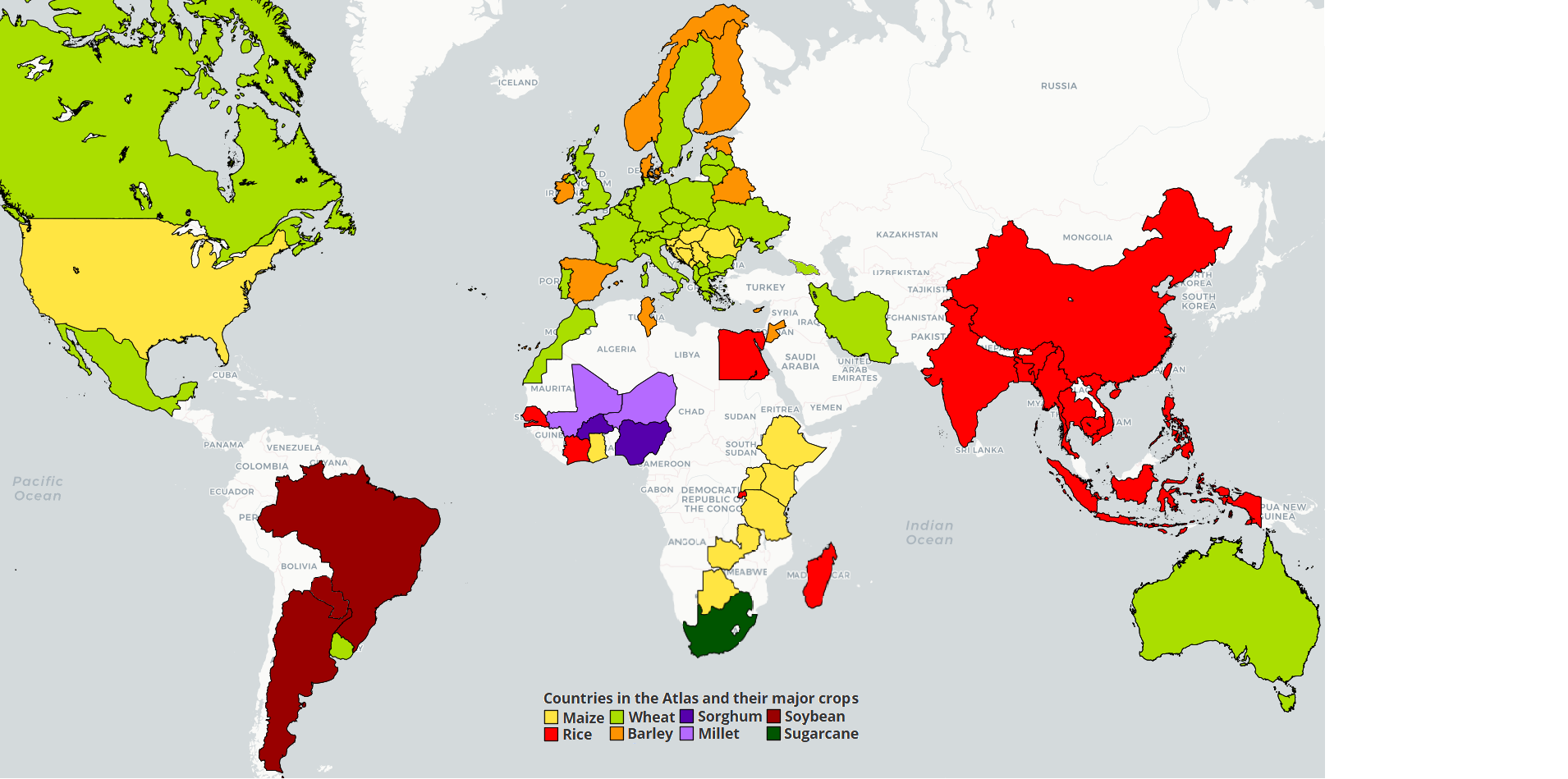 China Rice
China Rice
Rice production in China
China is one of the largest rice producing and consuming countries, accounting for more than 40% of global rice production (Figure 1) and more than 30% of global rice consumption. Rice harvest area in China's accounts for about 25% of the county's cultivated area (FAOSTAT, 2014). Irrigated rice dominates in China, accounting for more than 99% of total rice harvested area (You et al., 2014). Between the two major types of rice, Indica rice accounts for three-quarters of the rice area while the remaining is Japonica rice. Indica rice varieties are generally grown in the south and Japonicas in the north. Hybrid rice varieties occupy about 50% of China's rice harvested area (Yuan, 2003). In south China, two to three rice crops can be grown within one year, whereas in north China only a single-season rice is grown.
The major problems confronting rice production in China are the narrow genetic background, overuse of fertilizers and pesticides, breakdown of irrigation infrastructure, oversimplified crop management, and a weak extension system (Peng et al., 2009). On the other hand, many studies have reported that rice yield has reached its plateau and remained unchanged for several years in China (Zhang et al., 2014; Wei et al., 2015; Xu et al., 2016), implying a small or even negligible yield gain in the near future in China. Therefore, alleviating yield stagnation and further raising rice production is vitally important to ensure food security in China.
Data Sources and Assumptions (following GYGA protocols) for rice in China
Harvested area
Harvested area of irrigated rice was retrieved from SPAM2000 (http://mapspam.info/).
Weather data and reference weather stations (RWS)
In total, 50 RWSs located mainly in northeast, north, central and south part of China were selected following the GYGA protocols (Grassini et al., 2015; van Bussel et al., 2015). The total area of the buffer zones formed around the RWSsaccounts for 48% national rice harvested area. Those RWSs belong to 16 CZs, covering 85% of national rice harvested area.
Weather data of 11 years (2004-2014), including maximum and minimum temperatures, wind speed, relative humidity and precipitation were collected from the Chinese Meteorological Administration. Solar radiation was obtained from the NASA-POWER project (http://power.larc.nasa.gov/).
Actual yields
Data of actual yield were collected from statistical books and online sources of national and provincial governments. Data of recent 2-5 years of the counties where selected RWS were located were used. For the double rice (including early and late season), only the average yield without separation of early and late season was available. Since the harvested area of early and late season rice is largely equal (Statistical data from Ministry of agriculture of China), the average of simulated Yp of the early and late season rice was used for double rice systems.
Model calibration
ORYZA v3 was used to simulate Yp. Standard parameters as compiled in ORYZA v3 were used, but some parameters were calibrated to make the simulation results more adaptive to the specific crop and environmental conditions in different regions in China.
Rice management practices
Most crop management practices within a climatic region are similar. Therefore, to unify and simplify the crop management practices of RWSs in the same region, six regions were classified by considering climatic suitability of different cropping systems and the locations of the GYGA climate zones based on Duan et al. 2012 & 2013. The single rice systems were grouped to north-east, north, central and west regions, while the double rice systems were grouped to central and south regions. In each region, we selected one (single season) or two (double season) dominant rice cultivars in that region to run the simulation. Rice management practices including sowing date, plant density, growth duration and phenological stage of local cultivars were collected. For both single and double rice systems in the central part of China, two years (2012-2013) unpublished high yield experimental data from Wuxue experimental station, Hubei province were used to calibrate the model. Field management practices for high yielding rice were followed for those regions. For other locations, we utilized the published experimental data or locally calibrated parameters of ORYZA v3/2000 from high yielding research papers which are supposed to practice high yielding managements.
References
Hill, J., Monfreda, C., Polasky, S., Rockstrom, J., Sheehan, J., Siebert, S., Tilman, D., Zaks, D.P.M., 2011. Solutions for a cultivated planet. Nature 478, 337-342.
Grassini, P., van Bussel, L.G.J., Van Wart, J., Wolf, J., Claessens, L., Yang, H.S., Boogaard, H., de Groot, H., van Ittersum, M.K., Cassman, K.G., 2015. How good is good enough? Data requirements for reliable crop yield simulations and yield-gap analysis. Field Crops Research 177, 49-63.
Peng, S., Tang, Q., Zou, Y., 2009. Current status and challenges of rice production in China. Plant Production Science 12, 1-6.
van Bussel, L.G.J., Grassini, P., Van Wart, J., Wolf, J., Claessens, L., Yang, H.S., Boogaard, H., de Groot, H., Saito, K., Cassman, K.G., van Ittersum, M.K., 2015. From field to atlas: Upscaling of location-specific yield gap estimates. Field Crops Research 177, 98-108.
Xu, X., He, P., Zhao, S., Qiu, S., Johnston, A.M., Zhou, W., 2016. Quantification of yield gap and nutrient use efficiency of irrigated rice in China. Field Crops Research 186, 58-65.
You, L., U. Wood-Sichra, S. Fritz, Z. Guo, L. See, and J. Koo. 2014. Spatial Production Allocation Model (SPAM) 2005 v2.0. Available from http://mapspam.info.
Yuan, L., Virmani, S., Mao, C., Hardy, B., 2003. Recent progress in breeding super hybrid rice in China. Hybrid rice for food security, poverty alleviation and environmental protection. Proceedings of the 4th International Symposium on Hybrid Rice, Hanoi, Vietnam, 14-17 May, 2002. International Rice Research Institute (IRRI), pp. 3-6.
Zhai, F.Y., Du, S.F., Wang, Z.H., Zhang, J.G., Du, W.W., Popkin, B.M., 2014. Dynamics of the Chinese diet and the role of urbanicity, 1991–2011. Obesity Reviews 15, 16-26.
Zhang, T.Y., Yang, X.G., Wang, H.S., Li, Y., Ye, Q., 2014. Climatic and technological ceilings for Chinese rice stagnation based on yield gaps and yield trend pattern analysis. Global Change Biology 20, 1289-1298.
Get access to the Atlas for advanced users
Download GYGA results
 | Please read the license information in case you are interested in using the data from the Global Yield Gap Atlas. |
| read more>> |
 Country agronomists
Country agronomists

Shaobing Peng

Nanyan Deng

